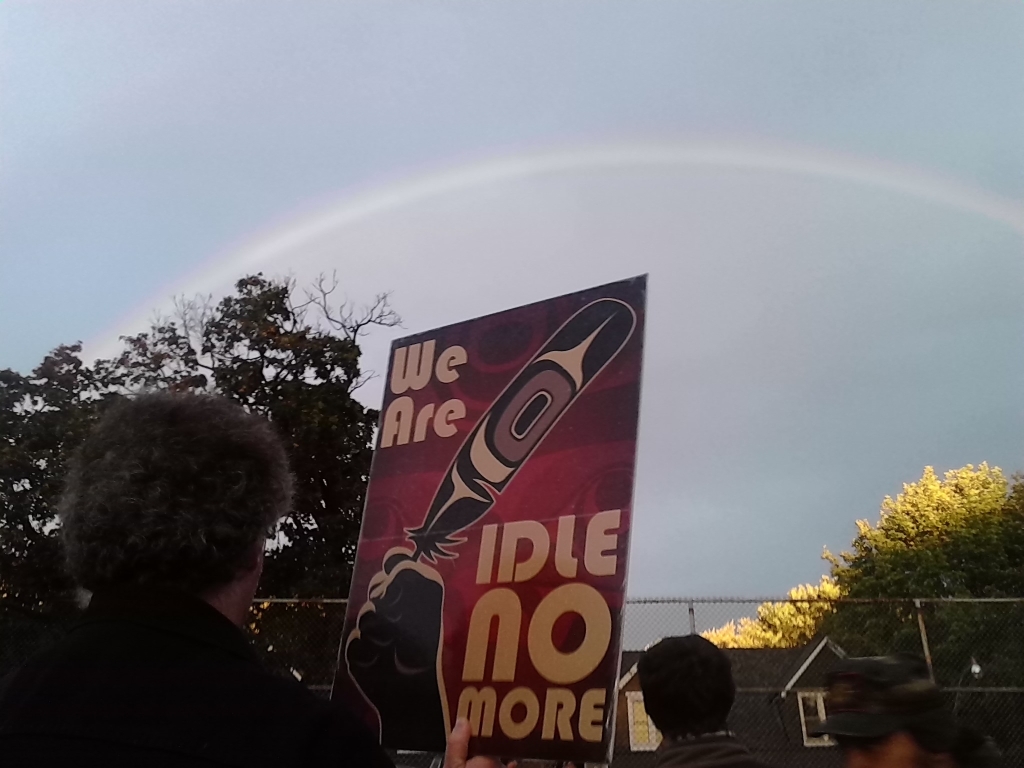October 7 is an important date for two reasons.
On October 7, the United Nations Special Rapporteur on the Rights of Indigenous Peoples, Professor James Anaya, began his official visit to Canada to examine the human rights situation of the Indigenous peoples of the country.
After meetings wrap up on Sunday, the government will get a chance to respond to the report before it is presented to the United Nations next year.
*Important note from the Special Rapporteur On Indigenous Rights:
“Information can be added by individuals and interested parties. Please be aware that, due to the large volume of requests, we will not be able to respond to all inquiries individually and not all of those interested may be able to participate in meetings. However, written information for consideration may be sent at any time to [email protected]. Thank you for your understanding.”
October 7 is also an important date because it’s the 250th anniversary of Royal Proclamation of 1763. Through that proclamation, the British Crown — Queen Elizabeth is currently Head of State but at the time it was King George III — recognized such important things as Indigenous sovereignty and land title though most of Canada, excluding most of British Columbia.
The main purpose of the proclamation was to create a system of organization to instill and enforce Great Britain’s power in its new North American empire and eventually codify — through treaty — its relationships with Canadian First Nations communities through trade and land agreements.
Thus, it’s referred to as our version of the Magna Carta, and helped to establish the Treaty System across Canada. This is where we get the designation — if you have ever heard of things like Treaty Three land blocks — which was established by Queen Victoria in October 3, 1873 in mainly Anishinaabe (and some Metis) territory that spans northwestern Ontario and a small part of eastern Manitoba.
Or Treaty Five territory, established in September, 1875, between Queen Victoria and the Saulteaux and Swampy Cree non-treaty tribes and peoples around Lake Winnipeg in the District of Keewatin.
This Crown-Indigenous relationship extends to various Canadian Supreme Court decisions and Section 35 of the Canadian Constitution Act (1982) which provides constitutional protection and treaty rights of Indigenous peoples in Canada.
And Section 25 of the Canadian Charter:
“The guarantee in this Charter of certain rights and freedoms shall not be construed as to abrogate or derogate from any aboriginal, treaty or other rights or freedoms that pertain to the aboriginal peoples of Canada including:
(a) any rights or freedoms that have been recognized by the Royal Proclamation of October 7, 1763; and
(b) any rights or freedoms that now exist by way of land claims agreements or may be so acquired.”
In total, Idle No More reports there were more than 63 demonstrations across 12 countries.
According to an interview with the CBC, “In just two weeks in January, Aboriginal Affairs accumulated over 1,200 pages of records on Idle No More, based on the disclosure of an access to information request.”
By February 15, officials had documented 439 protests across Canada. ‘It’s a really good archive,’ joked Idle No More organizer Alex Wilson.
In Toronto, over 200 people attended the rally that featured two round dances.
In Windsor, Ontario, a small demonstration occurred in the downtown core.
In Saskatoon, Saskatchewan, Idle No More activists held a round dance at the University of Saskatchewan campus.
Demonstrations were also held in Ottawa, Winnipeg, with a great set of Winnipeg photos here, and Vancouver.
There were serious accusations of racism at Montreal’s rally. “In the anniversary of the 1763 Royal Proclamation, the Montreal police took down and destroyed a tipi that community members had set up as part of the Idle No More Global Day of Action. According to witnesses, police did not attempt any negotiations and moved into the camp, pushing aside a group of Aboriginal women who were gathered around the tipi.”
These events are in solidarity with the six calls for change during our #SovSummer, created when Idle No More and Defenders of the Land joined forces.
1. Repeal provisions of Bill C-45 (including changes to the Indian Act and Navigable Waters Act, which infringe on environmental protections, Aboriginal and Treaty rights) and abandon all pending legislation which does the same.
2. Deepen democracy in Canada through practices such as proportional representation and consultation on all legislation concerning collective rights and environmental protections, and include legislation which restricts corporate interests.
3. In accordance with the United Nations Declaration on the Rights of Indigenous Peoples’ principle of free, prior, and informed consent, respect the right of Indigenous peoples to say no to development on their territory.
4. Cease its policy of extinguishment of Aboriginal Title and recognize and affirm Aboriginal Title and Rights, as set out in section 35 of Canada’s constitution, and recommended by the Royal Commission on Aboriginal Peoples.
5. Honour the spirit and intent of the historic Treaties. Officially repudiate the racist Doctrine of Discovery and the Doctrine of Terra Nullius, and abandon their use to justify the seizure of Indigenous Nations lands and wealth.
6. Actively resist violence against women and hold a national inquiry into missing and murdered Indigenous women and girls, and involve Indigenous women in the design, decision-making, process and implementation of this inquiry, as a step toward initiating a comprehensive and coordinated national action plan.
For more information on Idle No More, follow rabble.ca’s extensive coverage.




